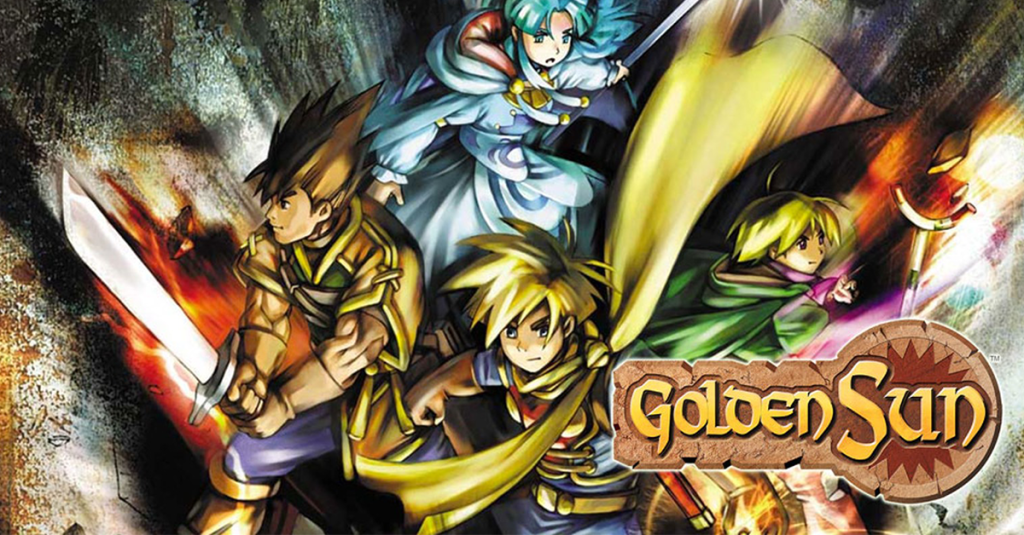2001 | Camelot Software Planning | Game Boy Advance

There are moments in life when the stars align just right and the perfect game arrives at the perfect moment in time. Most people have a game that they consider their gateway into a specific genre, or type of game. While my first Japanese RPG that I ever played was the legendary Final Fantasy VI, it was Camelot’s Golden Sun that made all the small pieces click in place and drew me so deep into the genre that I, willfully, to this day haven’t escaped that rabbit hole. It served as an introduction to endless, wondrous worlds and stories to explore, characters to experience this through and incredible music. Golden Sun has defined my interests in games since its release and as such this review is going to be incredibly biased. I have over two decades of wonderful memories of this particular game and am thrilled to try to put that into words.
While Camelot nowadays is known for its contributions to the Mario sports series, they used to absolutely dominate the RPG landscape with the incredible Shining series in the early-to-mid 90’s. Series developer and Camelot Software Planning president, Hiroyuki Takahashi, originally started his career under Enix, working on the Dragon Quest series. He’d later found Climax Entertainment in 1990 and a year later would release the foundation of their RPG work in Shining in the Darkness for Sega’s 16-bit systems. Shining in the Darkness is a first person dungeon crawler that sends players into decrepit ruins and dark castle hallways on a quest to rescue their father and the princess from the evil wizard Dark Sol. This also started a somewhat strenuous partnership with Sega, who was somewhat stingy with allocating any budget to the Shining series, despite its success. In 1991, Takahashi would register a new company, Sonic Software Planning, in partnership with Sega to promote their new mascot, Sonic The Hedgehog. From here, Sonic Software Planning would help Climax Entertainment with the strategy RPG Shining Force, after which they took over the series. A similar split would occur in 1994 with Shugo Takahashi, Hiroyuki’s brother, founding Camelot Software Planning as an independent studio, continuing development of new installments for the newly released Sega Saturn as well as release Beyond the Beyond for the original Playstation. Hiroyuki Takahashi would join the company in 1998 as company president. This also marked the beginning of an extremely long lasting partnership with my favorite composer, Motoi Sakuraba, who’d provide music for their games from this point onward. This partnership brought a new energy to the Shining series, releasing the bombastic dungeon crawler; Shining the Holy Ark (also known as “Dude, where’s my space ship”), and the massive finale to Shining Force. After the completion of all of Shining Force III’s scenario’s, Camelot would form a long lasting partnership with Nintendo to lead development on the Mario Sports series (also composed by Motoi Sakuraba).
Golden Sun originally started off as a single game that would release late in the Nintendo 64’s lifespan, however once it became apparent that the console was on his way out, leaving the center stage for its younger brother, the GameCube, development was shifted to the Game Boy Advance. Though originally intended as a launch title, the game’s year and a half development cycle caused it to be released a few months later in Japan and the year after in Europe. With the hardware restrictions of the GBA in mind, the game was split into two parts, known as Golden Sun and Golden Sun: The Lost Age in the west. Together they formed the entirety of the story, in similar fashion to Camelot’s Shining Force III or CyberConnect2’s .Hack quadrilogy. Golden Sun took the GBA by storm and to this day remains, for many people, as the definitive handheld RPG experience.
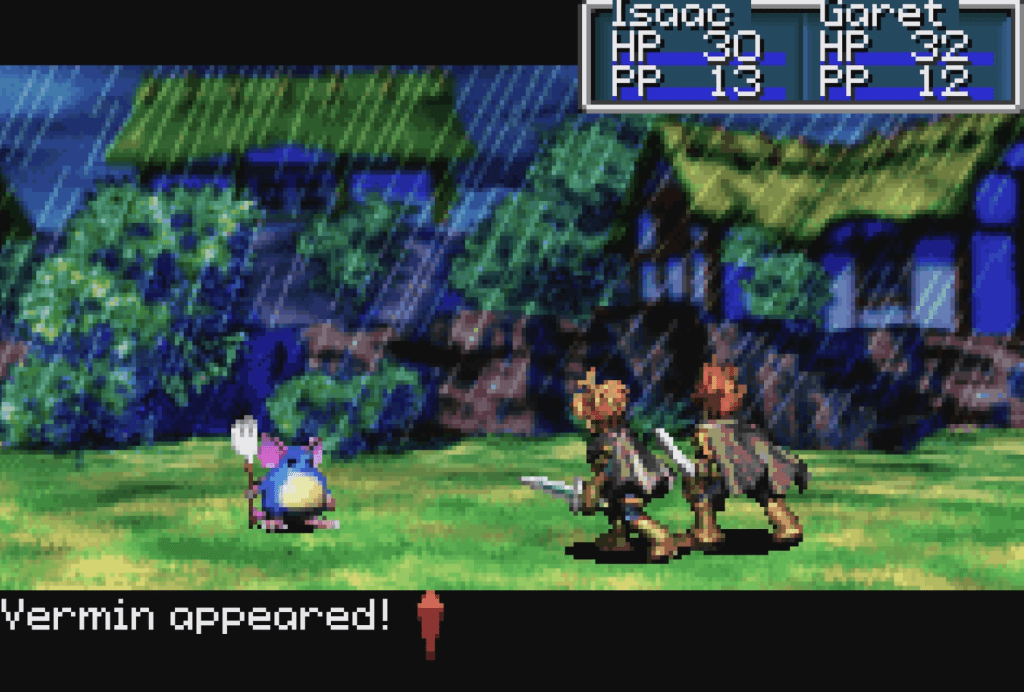
In Golden Sun we’re introduced to the world of Weyard, a circular plane with oceans perpetually spilling over the edge into the void. This world’s matter is comprised of a combination of the four classical elements; Fire, Earth, Water and Air. These elements are represented through Mars, Venus, Mercury and Jupiter. Certain people are attuned to the power that flows through these elements, called Adepts, and can manipulate elements using the lost art of Alchemy. Adepts can access this power and channel the elements into magical spells using Psynergy. In ancient times a lost civilization was governed by the power of Alchemy, which let to perpetual conflict and the near destruction of the world. As a result the power was sealed away in four lighthouses, whose keys, the Elemental Stars, got locked inside the Sol Sanctum and peace was restored to Weyard.
The game starts off on a stormy night, when our protagonist, Isaac, gets woken up by his mother to get to safety as the nearby mountain is causing a devastating rockslide. There’s little that the young Isaac can do as boulders come raining from the sky, threatening to destroy his hometown, Vale. Alongside his friend Garet, the two try to make it to safety. On their way to the lower part of town they stumble across their parents frantically trying to save one of the kids, Felix, from drowning as his sister Jenna looks on in horror. Eventually the gigantic boulder that was being contained breaks free as the Psynergy of the people holding it back runs out. It crashes down the mountain, killing the people on the dock, including Isaac’s father and seemingly Felix in the process. In a devastating aftermath, the two kids make their way to the center of town to get help, overhearing a conversation of two mysterious figures. These figures, Saturos and Menardi, are the ones that triggered the horrendous storm after a failed break-in into Sol Sanctum. To prevent the kids from spreading information about their involvement, they attack and we get our first introduction to the battle system. It’s a bit short-lived, however, as Saturos and Menardi make short work of Isaac and Garet, leaving them for dead in the rain. Queue title screen; Golden Sun.
The opening to the game is incredibly effective in presenting tension and mystery. Whilst the initial interactions, including the scripted battle, are short and compact, they serve as an excellent introduction to some of the core elements that drive the world of Weyard. One of the things that makes Golden Sun so special is the implementation of its magic system outside of combat. Whereas most RPG’s at the time would focus on using spells in battle to hurl fireballs at enemies, Golden Sun brings its system into its world. During the opening sequence we see people running back and forth to replenish their Psynergy at the crystal at the center of town. They’re constantly running out trying to hold back the boulders falling from the mountain and trying to protect the townsfolk. It makes the magic system part of the world instead of feeling like an added mechanic. Through Saturos and Menardi’s attempt at breaking in we also learn a lot about the influence of Psynergy on the world around it, them setting off a trap that caused the massive thunderstorm. After the opening we’re left with a lot of questions to solve. What is the Sol Sanctum and what is it guarding; why is a trap designed to unleash such calamitous effects; and who were those mysterious figures?
Cut to three years later and the gang, consisting of Isaac, Garet and Jenna, are getting ready for an excursion into the Sol Sanctum with their teacher Kraden. Since the incident the three of them have been receiving tutelage under Kraden to learn about Alchemy, its history and the application of Psynergy. We see the in-universe application for Psynergy again as Isaac uses his powers to telekinetically lift up hay to patch the roof, which Garet immediately falls through. As the trio makes their way to Kraden’s house, they stumble across two familiar figures, Saturos and Mendardi. They seem to once again try to gain access to the Sol Sanctum, but this time they seem surprisingly cooperative and even let the party meet up with Kraden.
The excursion turns a bit more into a break-in as the entrance to Mt. Aleph has been deemed off-limits for anyone other than the village elders, however this isn’t enough to deter our heroes from exploring the game’s first dungeon. In the bowels of Mt. Aleph’s temple we get to experience the meat and bones of what makes this game such a delicious and nourishing meal. Each character is attuned to one of the four elements. We have Isaac for Earth and Jenna and Garet for Fire (the other elements join later). They all come with a few spells that give you a taste of what’s to come, with a basic small earthquake and some fireballs that make up the starting kit of your arsenal. Each of the elements also provide moves that can be used outside of combat. One of the earlier puzzles involves finding a hidden entrance by telekinetically moving statues around. You do this by casting ‘Move’ on the overworld. It’s such a cool mechanic to bring some level of believable tangibility to your magic system and it’s something that I’ve rarely seen replicated to this extent.

After the party manages to open the gateway to the inner part of the Sol Sanctum, we discover the trap that caused the terrible storm from three years ago. The trap is a puzzle of an engraving of the moon and the sun (Sol) that you have to change, but any mistake will set it off instead of providing access to the inner sanctum. When the puzzle is solved it opens a door to the Elemental Chamber, a separate dimensional plane where the Elemental Stars are locked away. It’s in this room that I fell head over heels with the soundtrack of the game. The theme that plays during this segment, aptly named Elemental Stars, is a recurring theme that plays every time there is interaction with the Stars. It’s a beautiful, mesmerizing and mysterious feeling theme that is both calming and beckoning. The soundtrack for Golden Sun has many fantastic tracks, but Elemental Stars is a head above the rest. It perfectly encapsulates the feeling of ominous, ethereal mystery that enshrouds the room you’re in. When Isaac grabs the first Elemental Star, Saturos and Menardi appear; apparently awaiting the moment the inner chambers of the Sanctum were opened and hold Jenna and Kraden hostage, ordering Isaac to fetch the remaining Stars in exchange. Before handing off the final Elemental Star, Mt. Aleph starts erupting, unleashing part of the sealed power of Alchemy upon the world. Isaac and Garet only manage to survive with the help of the Wise One, the one-eyed guardian of the seal, and are tasked with preventing Saturos and Menardi from lighting the Elemental Lighthouses. Thusly the chase across Weyard begins and the party sets off into the world to save Jenna and Kraden and to prevent the power of Alchemy to once again run rampant.
The journey starts with Isaac and Garet departing from their hometown of Vale in pursuit of Saturos and Menardi. Along the way they’re joined by the Jupiter Adept, Ivan, and the Mercury Adept, Mia, representing wind and water respectively. We also encounter small creatures along the way that help boost your party’s power. These creatures, Djinn, are representatives of the elemental powers at work and you can collect 7 of them throughout the game for each element. The Djinn make Golden Sun an incredibly layered and accessible experience that allows for extremely powerful moves, incredible stat boosts and a lot of flexibility. Most people, like myself, will start out collecting them throughout the journey and attaching them to their respective Adept. So Isaac will get all the Venus Djinn, Mia the Mercury Djinn, and so on. This gives them an incredible boost in power as well as access to their entire elemental toolbox of spells, albeit from a singular element.
It makes playing the game a fairly straightforward and enjoyable experience, since the Djinn perfectly compliment the character as well as give easy access to your most powerful summons. Djinn offer a plethora of bonuses and learning how to use these bonuses to your advantage is key to understanding the layered system that hides beneath the surface. The little elemental critters operate in three modes. You can ‘Set’ them to any Adept you wish, giving them a stat boost. Alongside that, each Djinn has a unique effect that can be ‘Unleashed’ in battle. These effects range from a free revive, attacks with special properties and a barrier that nullifies damage, just to name a few. When a Djinn is Unleashed they go into standby, causing the character to lose the stat bonus, but gain a resource to use as a summon. Summons come in four stages, each requiring the prerequisite number of Djinn put into Standby. This turns the Djinn system into a balancing act of risk and reward. You can, for instance, enter a battle with as many Djinn on Standby as possible to unleash the monstrous wrath of the elements upon your foes, but this leaves you virtually defenseless for a few turns. After using Djinn to summon they go into recovery and can’t be used for a while. So pick your moments carefully.

The class system in Golden Sun is in part influenced by the character’s level and in part by the Djinn they have set to them. It adds a layer of depth to an otherwise incredibly solid foundation. You can mix and match different Djinn to give your characters vastly different tools to utilize. This system allows you to turn your tank into a secondary healer and your mage into a walking nuclear detonation. It’s incredibly enjoyable to find out what the different mixes and matches will do to your party configuration. The off-set to creating custom classes is that they’re reliant on the Djinn set to your character, so when you use them in battle they drastically alter the things that are available to you. The neat thing is that this makes you stay a bit more on your toes and offers a larger variety of tools to explore. It also gives Golden Sun a lot of replay value as each subsequent playthrough will allow you to continue peeling the layers one by one. Your overworld utility also changes with the different classes allowing you to potentially access different areas in different ways than intended.
Most of the game follows a more traditional take on the RPG genre, with the added twist of the Djinn system and usage of Psynergy to solve puzzles. Along the way you get to explore some fascinating dungeons, like the inside of a sentient tree to save the people of a nearby town from sprouting roots, a mirage filled desert and battling Krakens aboard sailboats. Most of the dungeons themselves are relatively brief, but packed to the brim with fun enemies to fight and puzzles to solve, as well as a plethora of bosses for you to face along the way. One of the larger challenges is item management. Instead of an equipment menu, Camelot took a design note from their older titles and gave each character a general inventory. This means that the more equipment you carry, the less space is available for other items; and this can clog up your bag space quite quickly. I usually find myself selling off consumable items that aren’t direct healing items by the bulk, since most of the recovery can be done through Psynergy. The journey through Weyard is taken at a delightfully brisk pace that really compliments the system its on.
Golden sun feels tailor-made to be the perfect Game Boy Advance game, in its design for gameplay and narrative delivery. Battles are often swift and snappy, with each side unleashing their most effective arsenal upon one another in rapid succession. Even bosses are generally constructed with the idea of being able to turn the handheld off shortly thereafter. Similar to something like the Pokemon games, Golden Sun feels like the perfect pocket RPG. Story beats are delivered in short, rapid bursts and despite the game being around 15 to 20 hours long on average, it’s packed to the brim with little things to explore, giving the game the illusion that it’s much longer than it actually is. The decision to split the game into two parts helps greatly with the smooth flow of the narrative, since it allows you to really fill in the blanks with interesting stuff instead of having to rush to the end. The result is a deeply satisfying RPG that’s easy to put down and pick up again, can be enjoyed in short bursts, and never feels like it drags its feet through the mud. In a time where handhelds and home consoles feel much more homogenized, it feels refreshing to look back on how well Camelot understood the assignment for delivering a satisfying and memorable handheld game that utilizes its platform this well.

A lot of Golden Sun’s visual presentation may seem familiar to those that have played some of Camelots earlier titles on the Sega Saturn, in particular Shining Force III and Shining the Holy Ark. The in-game sprites have this same scrunched look to them as they bounce up and down during conversations. The in battle models for all the characters are incredibly detailed, with a lot of tiny belts, sashes and flourishes being clearly modeled out. For a Game Boy Advance game it looks absolutely stunning. The only time things might look a tad crunchy is when you call in the bigger models through summoning or when fighting the pixel blob of a final boss. The overworld is presented with a certain level of vibrancy, both in coloring and design. Each town has unique architecture and citizens rummaging around in them. All of this is accompanied by, what I consider, Motoi Sakuraba’s magnus opus of a soundtrack. The themes in the towns perfectly compliment their environment, with some sounding like the wind rolling over grassy hills, or bringing more upbeat jaunts and jingles to the entertainment city of Tolbi. The battle themes are especially imposing with basslines sweeping and weaving around shredding synthesizer riffs. And while Elemental Stars might be my favorite track in this incredible collection of music, it’s the moment that you enter the Venus Lighthouse that something feels different. The song that plays during the final dungeon of the game is the cause of many drained batteries as younger me was listening to it on repeat for hours on end. It’s such a bombastic build-up to the final confrontation on top of the lighthouse, and I can’t get enough of it. The sound quality is very impressive as well, with the Game Boy Advance really bringing all the facets of Sakuraba’s work to life without it sounding flat and tinny.
Golden Sun forged the foundation of my deep love for RPG’s ever since its release over two decades ago. It’s an incredibly layered experience that offers a good baseline for people new to RPG’s, while offering a metric ton of depth for people returning to it, as well as genre veterans. While the story is only one half of a whole, it doesn’t make the experience feel less complete. It does end a bit abruptly, leaving you wondering where the rest went, but the journey to that point is densely packed with little stories to explore and characters to meet. Due to the game being on the Game Boy Advance, it has to create a lot of breathing room between either story beats or dungeon exploration to enable you to put the game down and pick it back up. Maybe it’s because of this design that a lot of the smaller moments in Golden Sun feel so incredibly memorable. As an example; During your journey to the Mercury Lighthouse you encounter a town that has been turned to trees. This arc within the grander story is divided into a few key moments, from your interactions with the baron of Bilibin, seeing the children turned trees stacked on top of one another near the river shore, to the dungeon inside of Trent. Each aspect of this story beat is given an equal level of depth and attention. The entirety of the game is shaped like this, making for an incredible amount of memories to make along the way.
To have everything wrapped in a package of Camelot’s signature style and Sakuraba’s magnificent soundtrack left such a deep rooted impression on me as a kid, and still does. Golden Sun is a brilliant example of a game catered to a specific platform that utilizes the lessons learned across the earlier history of Camelot to create a fantastic experience. For this reason, Golden Sun will always remain cemented as one of my favorite games of all time and that still holds true after replaying it for this review. The sequel offers a much grander scope and loses a bit of that catered touch as a result, but is no less brilliant than the first game. My hope is that the release on Nintendo Switch Online will garner enough attention to let Nintendo release Camelot from their basement to work on a collection or continuation. For now, I have a second game to play, so I’ll leave it at that.
Casting Judgment on a rat/10
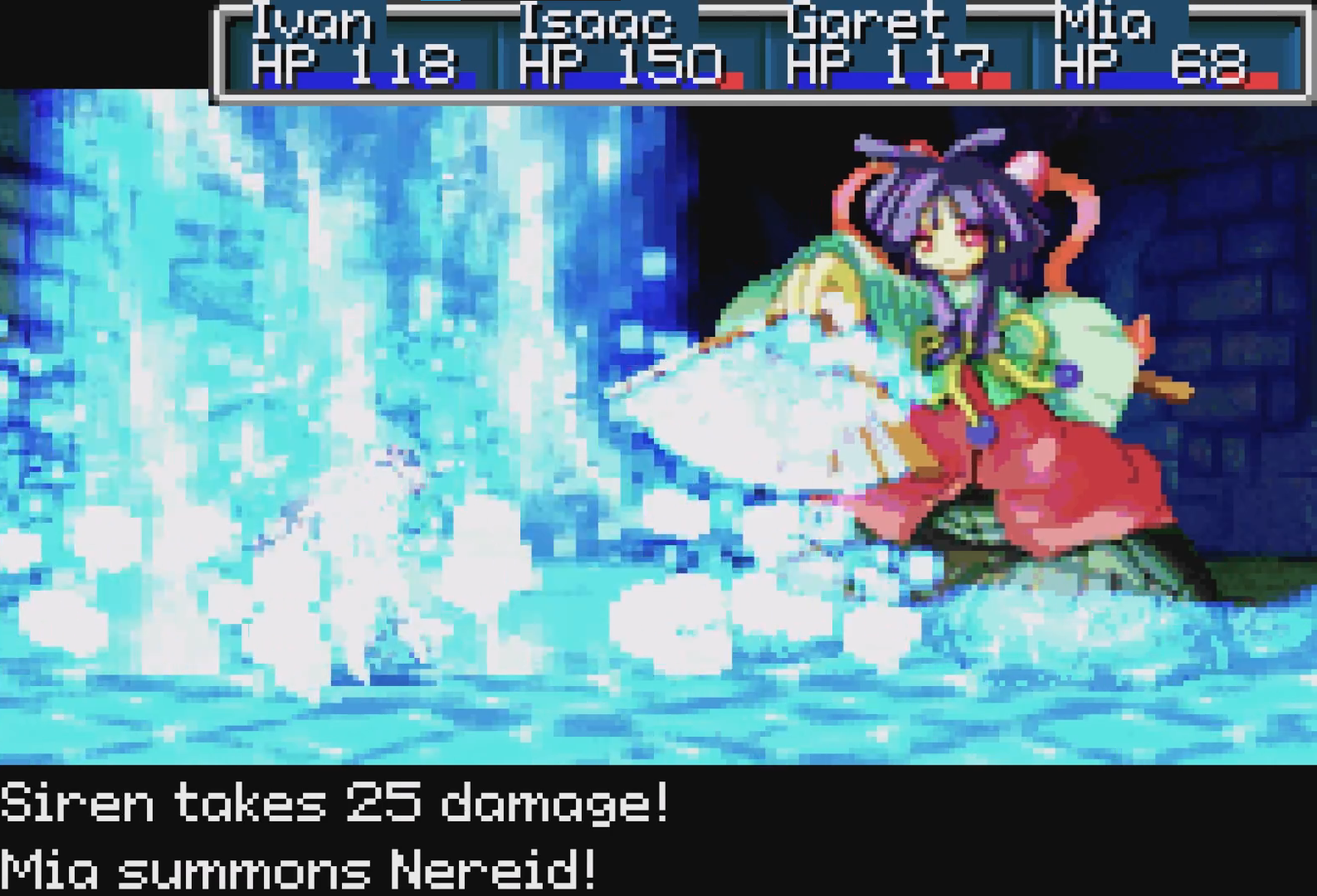



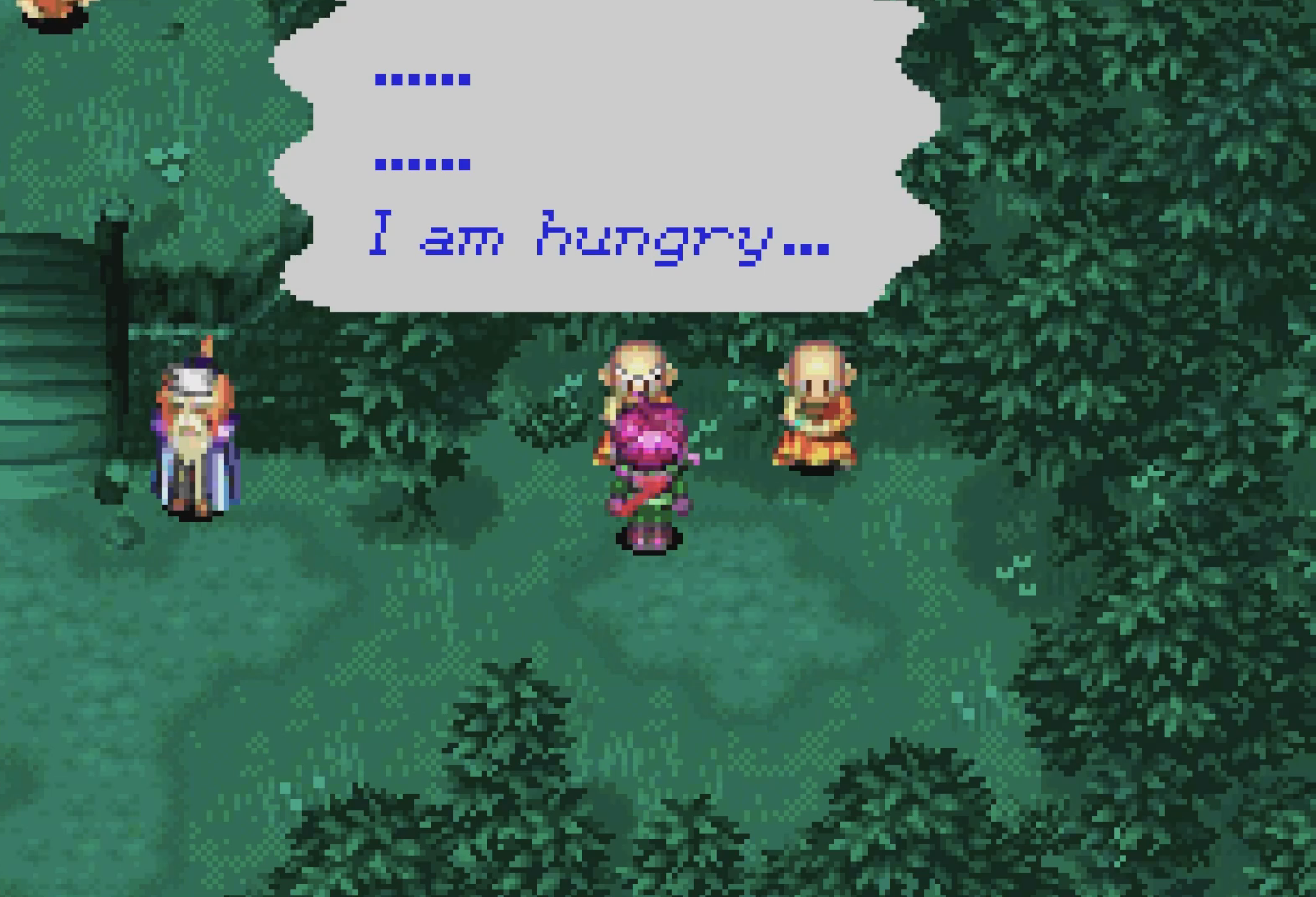
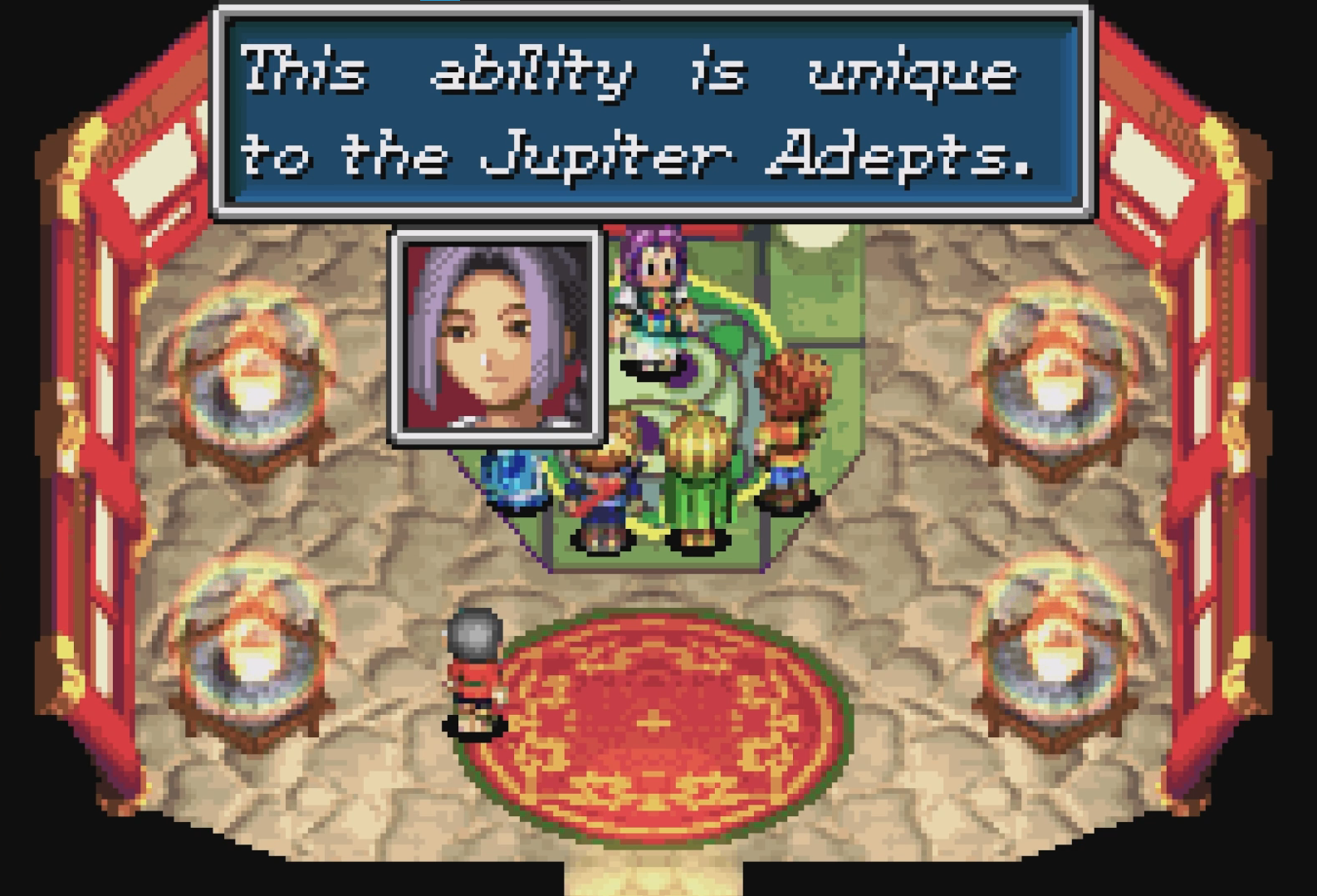

Enjoying the review? Consider supporting TanookiChickenAttack with a coffee at;
https://ko-fi.com/tanookichickenattack

